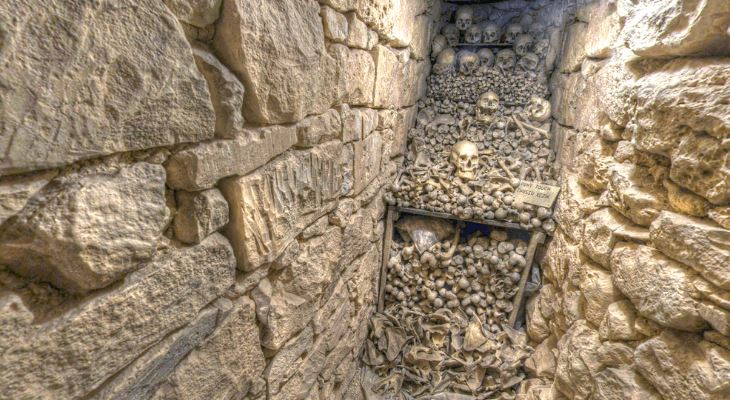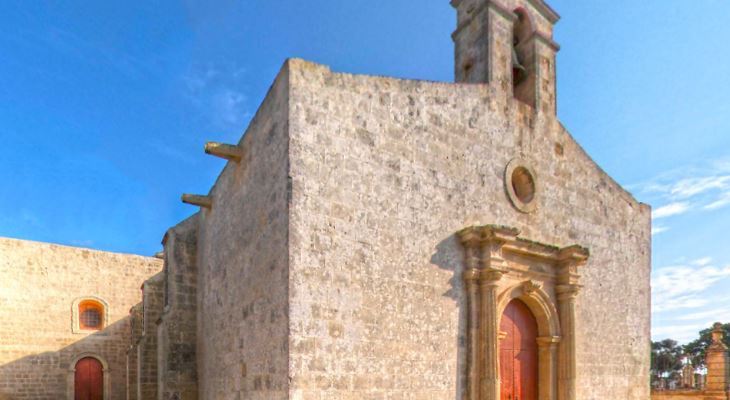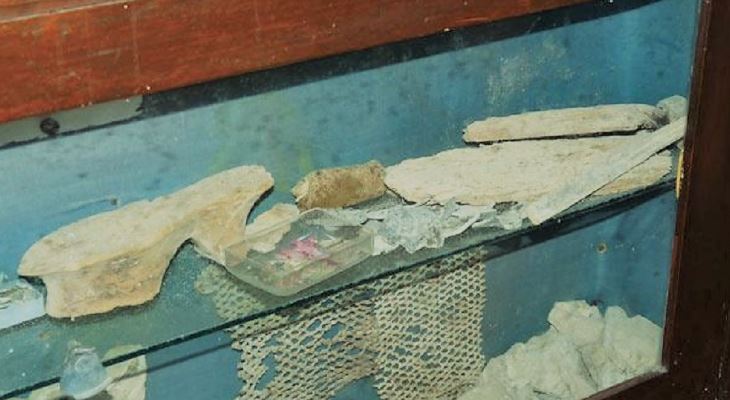Scary! This secret passage in St Gregory's Church in Zejtun is full of human bones
This place is still shrouded in mystery, 50 years after it was first discovered.

User:Reuv1 [CC BY-SA 3.0 (https://creativecommons.org/licenses/by-sa/3.0)], from Wikimedia Commons
Who were the people whose bones were found in the secret passageway discovered inside the walls of St Gregory’s Church in Zejtun? Why were they there? What about the curious selection of objects found buried with them?
The find was first reported on the Times of Malta on April 15, 1969. However, little else has been discovered since. In a more recent report by the Times of Malta of April 11, 2012, we read:
"After more than 42 years of silence, Grezzju Vella, who was only 16 at the time, narrated the horrible day of this gruesome discovery. He had been doing some work near the dome of the church, believed to be one of the earliest domes in Malta, together with his uncle, Carmelo Spiteri, and a fellow worker, Ċikku Zammit. At one point he got fed up and unwittingly began to scrape at a narrow crack between two stone slabs. When the crack widened, he threw a stone inside, expecting to hear it go down into the church, but instead it fell nearby and he realised that there was something underneath the roof.
"Mr Vella called the others and soon they were joined by Fr Palmier, who was responsible for the church, and by ĠanMarì Debono, who was the sacristan. On the removal of a large stone, a dark void was revealed and since only Mr Vella could pass through the hole in the roof, he was tied to a rope and given a box of matches so that he could inspect the site.
"Eventually the boy came upon a number of human skeletons and got a terrible fright which left him deeply traumatised. In fact Mr Vella never returned to this church again, notwithstanding that he lives only a few kilometres away. It was only last year that he bravely ventured into the passages and nervously took a look at the human bones, now stacked at the far corner of the third corridor."

User:Reuv1 [CC BY-SA 3.0 (https://creativecommons.org/licenses/by-sa/3.0)], from Wikimedia Commons
The original Zejtun church, now open only on certain occasions, was one of the first ten parishes of Malta listed in 1436. The parish served the entire south-east portion of Malta and was dedicated to St Catherine, but it came to be known as St Gregory’s due to a traditional annual procession held right after Easter. Although the medieval church was altered in the 16th century, it retains one of the oldest cupolas on the island.
Some suggest that the U-shaped secret passage around the cupola might have been a shelter for the lookouts on duty there. The church occupies the highest point that overlooks the harbours of Marsaxlokk, St Thomas Bay and Marsascala in the south, a popular landing spot for Barbary pirates. It was therefore also used as a watchtower and warnings of landings were communicated via smoke signals from the roof of the church.
But why was the passage full of human bones? Were these people trapped there and buried alive as legend has it?
Local legend suggests that these people were buried alive after being discovered hiding during the Ottoman siege on Zejtun of 1614 and this story can be traced to a ballad written by Walter Zahra shortly after the discovery of the passage.
Actually, studies in 1978 concluded that the bones were exhumed and probably moved there from a cemetery. What is surprising, however, is that the study also concluded that the deaths had all occurred at around the same time. Where these people killed during the raid on Zejtun and placed in the secret passage later? But what was the purpose of carrying the bones all the way up to the roof of the church?

Times of Malta
As if that were not enough, what about the strange selection of objects found buried with the bones? From a high-heeled wooden shoe, and part of a chain-mail armour vest, to a Byzantine cross, and bits of pottery and coins, the objects found offer nothing but more mystery. The inadequate state of preservation of these objects - in a plain box somewhere inside the church - only adds more questions as to why they were left hidden and somewhat forgotten.
These items were vividly described in another article by the Times of Malta of August 24, 2014, which continued to reveal some interesting details.
Apparently, some graffiti at the entrance of the third passage - engravings bearing the initials VA and CZ and the date 19.02.09 - were traced to Carmelo Zahra, who confessed that he had entered the passages as a young boy, even before it was ‘first discovered’. He claimed that several other objects had been stolen by those who accompanied him. These included soldier uniforms worn by the skeletons, weapons and flags. Was Zahra telling the truth? If so, where are these objects now?
Carbon dating on the bones and deeper examination of the objects might just begin to shed some light on the provenance of these remains. Will this mystery ever be solved?